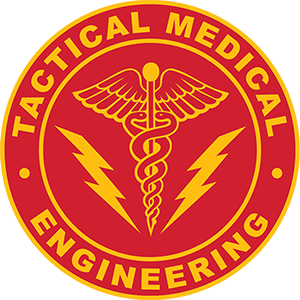Tactical Medical Engineering
Tactical Medical Engineering, TME, is a MedTech engineering company focused on integrated wireless AI run medical devices. The CatII Quad Sensor, QS, currently in development, is a wireless multichip module built with four approved medical chipsets. These chips come from existing EKG/EEG, temperature, stethoscope, and accelerometer chipsets now in production, but not integrated. The Cat III Synthetic Aperture Dielectric Tissue Scanner, SADTS, is a variation of a tool developed for the Türkiye government to map and remove the land mine fields between Türkiye and Syria. The Organic Dentritic Interposer, ODI, used to attach the QS to the body has electrical connectivity points for EEG/EKG and temperature probe plus an acoustically clear window for the body to the stethoscope interface, the accelerometer is built into the base of the QS.
How it works: The core of the TME suite is an AI backpack that connects all the medical devices in a single box. It takes hundreds of readings per minute and generates the output scans and audio to existing medically approved tablets, desktops, earbuds, and smartphones. In addition to not only reading and presenting the information the AI backpack does a medical analysis, provides status, asks questions about the patients’, and makes recommendations to the staff on the patients’ existing condition, outlook, and recommended treatments.

EKG – standard 12 lead readings show on phone/laptop/tablet/display/etc.
Temp Probe – temporary reading XXX.XX – output reads all locations on the body where placed.
Accelerometer – respiration rate/rhythm/depth/ compares both lungs, ID differences, detects broken sternum bones, flailed ribs, and more.
Stethoscope – auscultates lungs/ heart, detects crepitus, outputs audio and sign wave.

Quad Sensor
EEG – multiple leads depending on patient issues.
Temp Probe – temp reading XXX.XX – output reads all locations on the body where placed.
Accelerometer – detect pulse rate/rhythm/quality, compare movement of the skull
Stethoscope – listen for unusual sounds.

EKG – detect fetal heart rate.
Temp Probe – temporary reading XXX.XX – output reads all locations on the body where placed.
Accelerometer – detect movement of fetus/level of agitation
Stethoscope – listen to heart rate and determine position of the fetus and agitation/stress levels.

EKG – On ankle part of standard EKG, may have ground strap added.
Temp Probe – temporary reading XXX.XX – output reads all locations on the body where placed – ID shock issues, hypo/hyperthermia issues, all temporary probes compared and tracked.
Accelerometer – movement of limbs with two or more attached – detects broken bones
Stethoscope – detect pulse and determine if there is compartmentalization or blockage.
The AI Backpack contains the heart of the TME AI system. It receives and analyzes all the data from the Quad Sensors, builds the scanned image from the Synthetic Aperture Dielectric Tissue Scanner, monitors and controls IV’s including fluid temperature and drip rates , monitors lung pressure, analyzes body temperature locations and determines trends, ID’s visible and non-visible broken and fractured bones, ID’s blood clots/vascular/ circulation issues. It supports all Android and Windows media platforms.
TME’s goal is to transform emergency medical care around the world to ensure that today, death is not the final cure.
